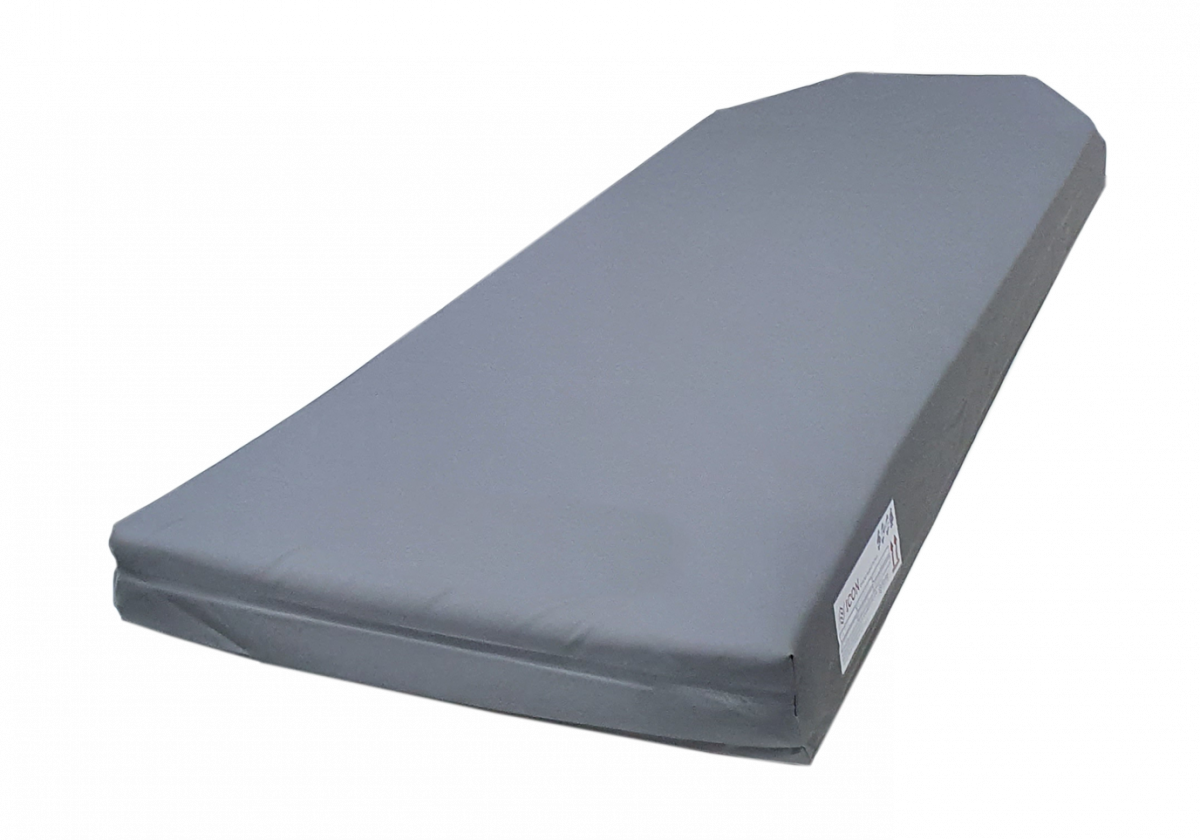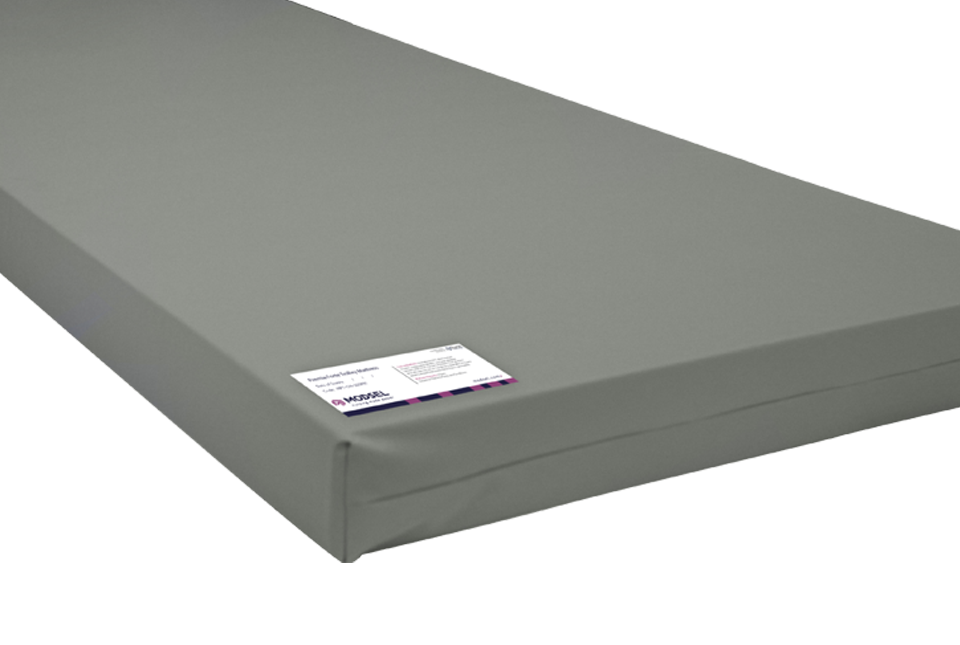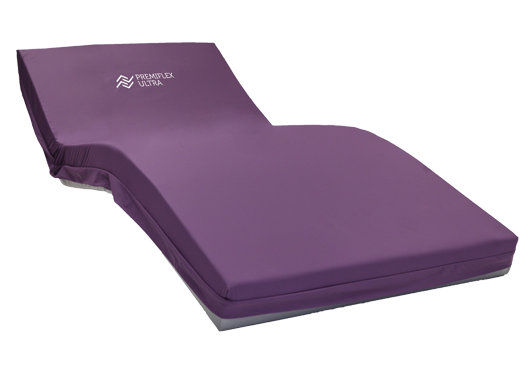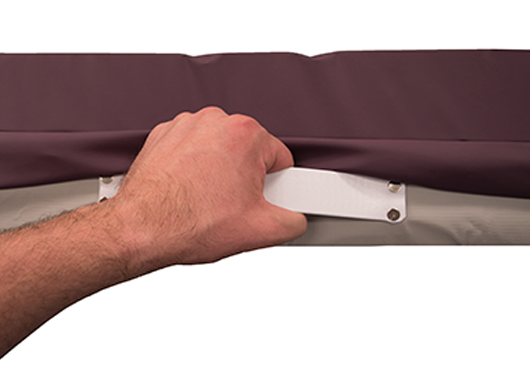Icon IPT1 Patient Transport Mattress
Icon IPT1 Patient Transport Pressure Care Stretcher Mattress
Answering requirements from the patient transport and Ambulance sectors, the Icon IPT provides excellent pressure care, comfort and support for patient transport and ambulance journeys. High performance foam and covering materials are utilised in the manufacture of the Icon IPT to provide exceptional durability in demanding patient transfer situations. The core design provides superior shock absorption for additional comfort during stretcher transfer. The Icon IPT is customisable to suit any patient stretcher configuration, size and function.
Features
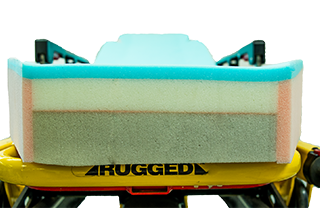
DUAL DENSITY, GRADED CORE
- Graded for immersion and support
- High performance, premium quality foam
- Anti-microbial treatment applied to foam maximises longevity and core micro-climate
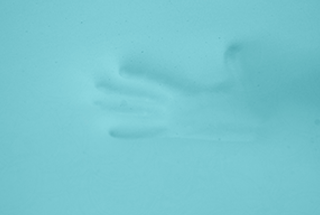
AIROFORM MEMORY MEDIUM IMMERSION INTERFACE LAYER
- High shock absorption properties enhancing patient comfort
- High Temperature Stability to deliver consistent immersion, performance and comfort
- Maximises Patient contact with Support Surfaces Providing Pressure Redistribution
- Alleviates localised pressure points
- Depth calibrated to maximise functionality and patient mobility
- Visco-elastic/Memory Foam cell structure provides low-shear surface
- Firmness: Medium
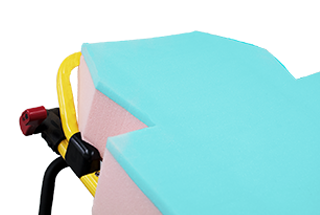
ANGLED STRENGTHENED SIDE REGION
- Provides lateral support and increased stability within the support surface
- Facilitates patient ingress/egress by providing additional support

PREMIUM FIRM FOUNDATION LAYER
- Provides protection against ‘bottoming-out’ during transfer, repositioning and whilst in the inclined/fowler position
- Provides exceptional comfort, support for repositioning and patient care
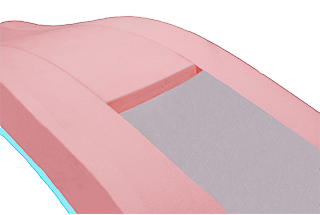
TRIPLE SEGMENT, SPLIT BASE
- Provides enhanced contouring with stretcher surface
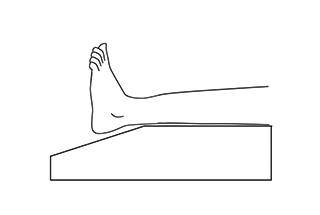
SLOPED HEEL PRESSURE TRANSFER ZONE
- Enhances pressure relief & protection for the critical at-risk heel region
- Offloads pressure from the patient’s heels and transfers it to calf area
- Unobtrusive, does not require any adjustment
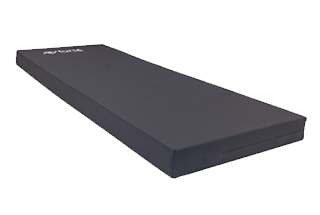
DOUBLE COATED PREMIFLEX COVER W/NON-SLIP PATCHES
- Double Coated Premiflex PFPU1200 Polyurethane Material: Robust, Vapour Permeable, Deep Grey
- Non-Slip Polyurethane Waterproof Patches on Base: Provides excellent grip to bed/stretcher base, prevents sliding, improves safety, alternative to Velcro!
- Full Vapour Permeability
- Infection Control & Compliance: 10,000ppm chlorine based cleaning agent concentration suitability, Inherent Anti-Microbial Protection, Fire retardant, High frequency sealed and welded seams
- Construction: Two-sided / 180° high frequency welded zipper, Zipper waterfall protection flap, High frequency sealed and welded seams
About the Icon IPT1
Patient Transport Pressure Care Stretcher Mattress
VERSATILITY
The Icon IPT mattress is a specialist stretcher mattress designed to suit patient transport vehicles. The Icon IPT mattress has a therapeutic weight limit of 200kg.
The Icon IPT can be customised in size and shape to suit any stretcher, such as the Stryker M1, Stryker XPS, Aerolite, and Clavia.
The cover of the Icon IPT is made from the Forté Double Coated Premiflex material. Double coated material has been selected specifically for the operating/emergency/transport application which is typically more demanding and rougher than a general ward scenario. The cover is constructed with high frequency sealed and welded seams (as opposed to sewn) to meet infection control requirements and prevent seepage of fluid through open sewn seams.
These electromagnetically fused seams protect against risk of penetration fluid as they 100% seal off to prevent ingress of fluid or infection. Forté’s covers are reinforced with additional heavy duty stitching at stress points within the cover. Infection control is of utmost importance in the operating and emergency environment so every cover must have high frequency welded seams. The Icon IPT is easy and quick to wipe down and clean following use.
To prevent any slippage or movement of the mattress on the stretcher support surface, Forté stretchers have non-slip patches welded to the base of the cover. Historically velcro has been used for this purpose, but velcro does not meet infection control recommendations for facilities.

SLOPED HEEL REGION
The heels are one of the most susceptible sites for pressure injuries, due to factors such as heel anatomy, disease burden, comorbid conditions, and the aging process. Heel Pressure Injuries (HPI) has been found to be one of the most prevalent sites for pressure injuries to occur, with a study in Europe identifying that 38.5% of stage IV pressure injuries were found at the heels. Pressure upon the Calcaneus can be reduced and redistributed by elevating the lower leg and calf 2. There are three primary designs of heel elevation discussed in this article: the Heel Slope (Surface Modification), Heel elevator (external device) and the elevated Heel slope (Hybrid Model).
Though essential in the clinical setting, and particularly with those that are medically complex, elevating the heel and redistributing the pressure towards the calf is a difficult task. There are several implementation considerations such as ensuring the knee is at a slight flexion (5-10°) while the heel is elevated can help avoid vein compression and increased risk of deep vein thrombosis (DVT), adapting a plan of care to the individuals’ needs and avoiding causing harm to other ‘at-risk’ areas of the body (such as the Achilles tendon).
With patients on a traditional support surface with a completely horizontal fascia (no heel slope) and no additional aid from an external heel device, pressure injuries upon the heel region are more common than with heels that have elevated heels, with differences being from an 8% to 54.2% incidence on heel injury respectively.
Forté has conducted studies to illustrate the basic principles of heel offloading using a Tekscan Pressure Measurement System which utilises a thin and flexible sensor. We use this system to measure the pressure distribution of a human body on the surface of our mattresses with minimal interference.
The image demonstrates the pressure distribution of the NPIAP/RESNA 50th Percentile male mannequin (81.2kg, 1775mm tall) over a 6-hour period, shown in a variety of heel positions. The Support surface used is a Single Sovereign S3 High-Care Mattress.
Such a decrease in pressure, therefore, signifies the importance of heel offloading, and indirectly the importance of utilising a support surface modified with a heel slope as a means of offloading such pressure and reducing risk of an HPI. Furthermore, the heel slope was identified to encourage a slight bend in the knee of approximately 8-10°, in comparison to a flat surface which evidence has suggested reduces popliteal vein compression.
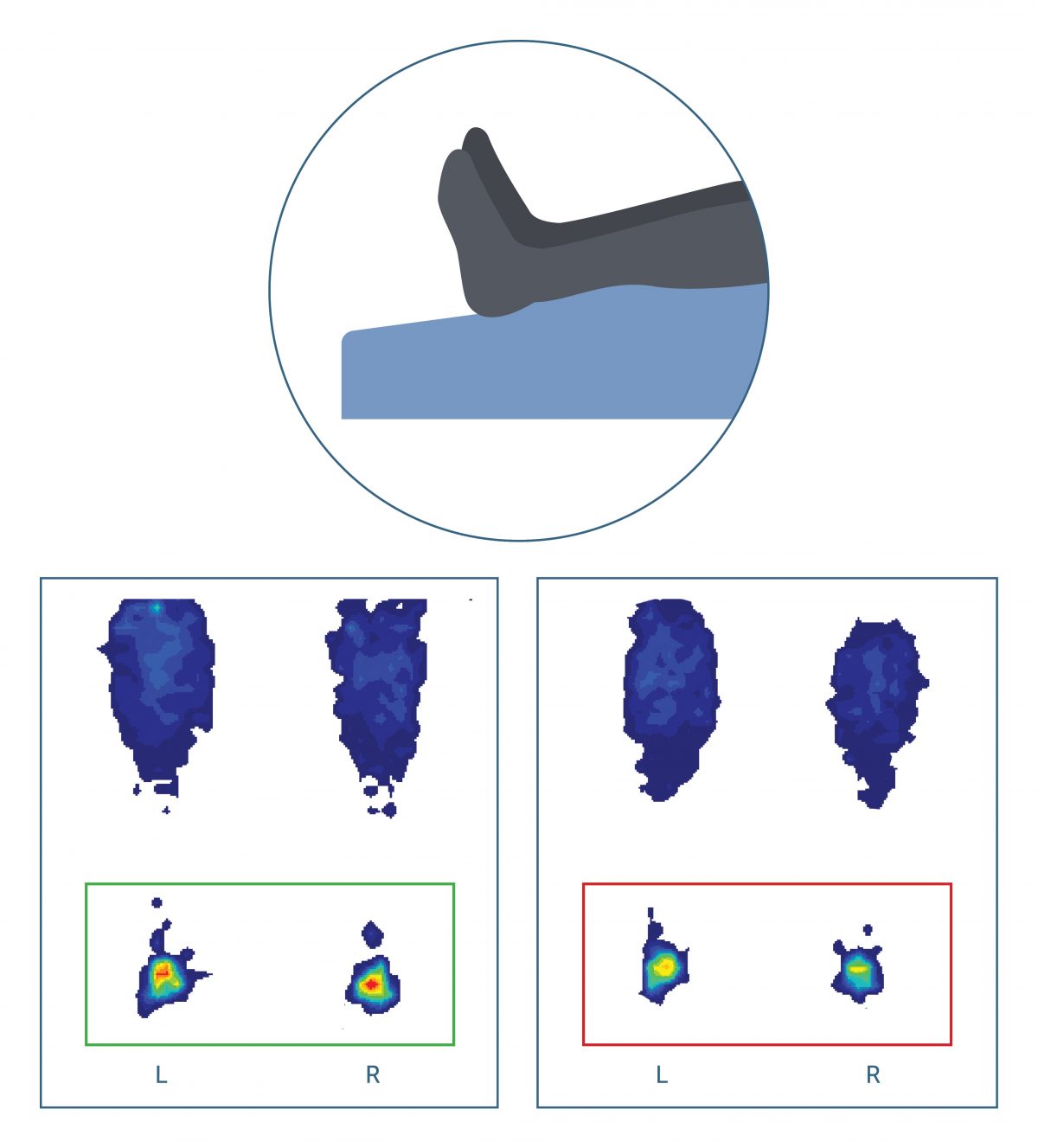
PRESSURE INJURY PREVENTION ON A STRETCHER
According to the Prevention and Treatment of Pressure Injuries Clinical Practice Guideline, The International Guideline 2019 – Individuals may be at risk for pressure injury in all circumstances where they are in contact with a support surface and have a degree of immobility or inactivity. This includes vehicle transportation, operating rooms, and waiting for a clinical review and/or admission in the emergency department.
To minimise the time and magnitude of pressure and shear exerted on pressure points, individuals at risk of pressure injuries should also be placed on a pressure redistributing support surface. It is recommended to Use a pressure redistribution support surface on the operating table and during transit for all individuals with or at risk of pressure injuries.
Interface pressures on an operating table can be very high. In the operating room, the duration of time the individual will spend in one position is generally determined by the surgical procedure. This increases the importance of the support surface in reducing pressure injury risk – both preoperatively and postoperatively.
Some surgical procedures may have specific requirements based on duration, positioning, instrumentation, and stability of the operative field. For example, no metal components which may interfere with imaging. Most stretcher support surfaces need to be low profile.
Achieving sustained support and pressure redistribution on a low profile support surface can be challenging – ensure stretcher support surfaces are manufactured with top quality raw materials.

MEDICAL FOAM TECHNOLGY
Foams used by Forté in the Icon IPT stretcher mattress are specifically formulated for use within high humidity applications, typical within Hospital applications where the mattress has low rest periods and is fitted with Moisture Vapour Permeable Covers. ‘Humidity’ treatment ensures that the structural integrity of the foams remains within conditions that would otherwise have a significant degrading effect on foam performance. It also ensures postural support is maintained for comfort and prevents excessive pressure forces because of foam collapse. It is crucial to pressure injury prevention that the foam maintains its support to prevent a ‘bottoming out’ effect and ensure immersion and envelopment.
Foams are also treated with Eversheild Anti-Microbial protection to prevent the growth of mould and bacteria. Maintaining healthy conditions within the foams reduces risk of infection control, cross patient contamination and mould.
Foams are individually sourced and selected as raw materials by Forté Healthcare from verified manufacturers within Australia, Europe and United States for guaranteed compliance with International standards. Forté provides complete supply chain transparency, benefiting the user by ensuring ultimate governance on quality and raw material safety especially necessary as Medical Mattresses are used in very close physical proximity to vulnerable users.
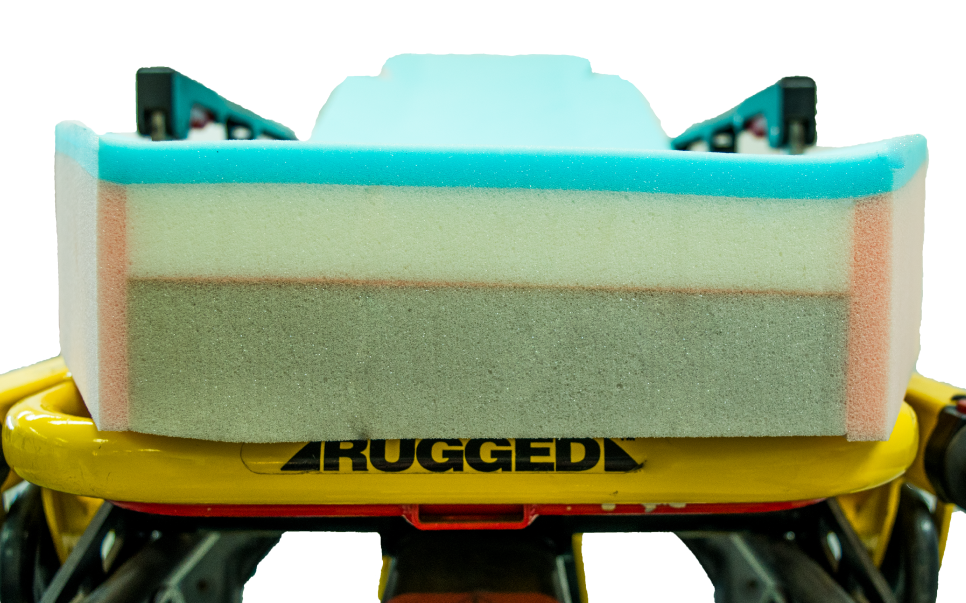

Manufacturing
Forté Stretcher Mattresses are manufactured within our Armidale factory using unique specifications of high-performance raw materials. Sizing can be set to meet the exact brand of Stretcher within any facility including angled and shaped corners. Additional features and options include fastening straps, buckles, head and foot cushions all of which are manufactured to comply with infection control requirements and offer excellent longevity.

You’re Covered by Forté Healthcare’s ‘Successful Solution Guarantee’
At Forté Healthcare, we are so confident in the care and performance our support surfaces deliver, that we back our products and expertise with our ‘Successful Solution Guarantee’.
Here’s how it works:
Our team of specialists will help you navigate our product range to correctly match our support surfaces with your care environment and patient risk profile. This ensures you achieve the highest levels of patient care and pressure injury prevention.
If, for whatever reason the product we recommend isn’t helping you achieve the outcome you expected, we’ll work with you until it is. And in the unlikely event we still cannot provide the right solution.
We’ll refund you 100% of the charges to date.


